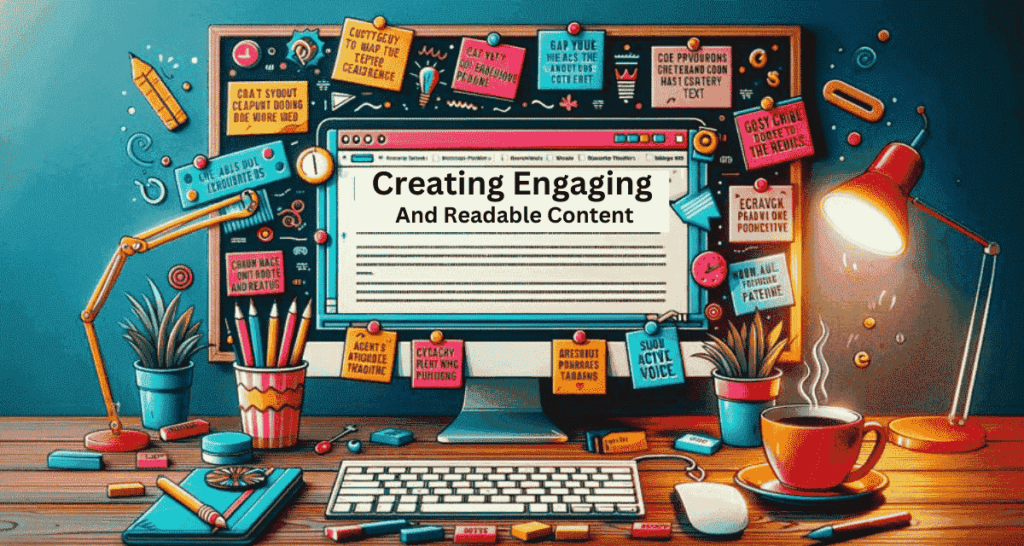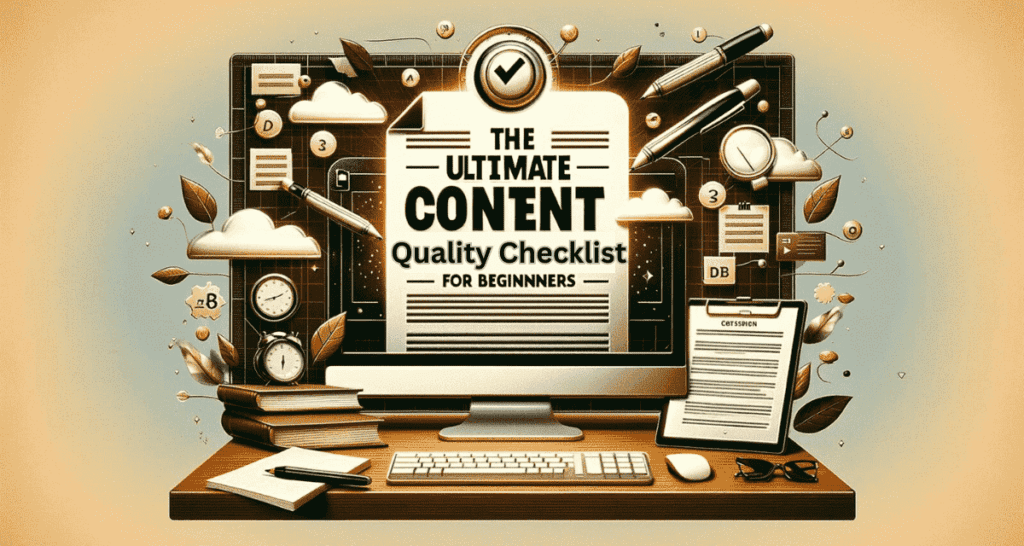In today’s digital landscape, the quality of content you produce can make or break your online success. It’s not just about getting your message out there; it’s about creating value, engaging your audience, and standing out in an ocean of information. This article is your gateway to understanding how merging content quality with user engagement strategies can increase your digital presence.
By walking you through a comprehensive content quality checklist, we aim to provide you with actionable insights. These insights will not only enhance your content’s appeal but also its visibility and effectiveness in engaging users. Let’s dive in.
Section 1: Foundations of Content Quality
What is Content Quality?
At its core, content quality refers to the value, relevance, and appeal of your digital content. High-quality content is engaging, informative, and modified to meet the needs of your target audience. It’s the foundation of a strong online strategy, impacting everything from SEO to user experience.
Why is it important, you might ask? The answer lies in the competitive nature of the digital world. Quality content can significantly boost your online visibility, driving traffic to your site and keeping users engaged longer. It’s about creating a positive user experience that encourages visitors to return.
Section 2: The Content Quality Checklist for Beginners
Topic Selection and Relevance
Choosing the right topics is important. It’s about identifying what is the demand of your audience, answering their questions, and providing value. How do you find these golden topics? Start by understanding your audience’s interests, challenges, and search behaviors.
Keyword Research and SEO
Keyword research is the backbone of SEO. It involves identifying the terms and phrases your target audience uses in search engines. Integrating these keywords into your content improves its visibility and helps attract the right visitors. Tools like Google’s Keyword Planner can be a great starting point.
Want a detailed guide? Here it is How to Conduct Mobile Keyword Research for SEO. This will make things more easy for you.
Creating Engaging and Readable Content

Engagement is key. Writing in a conversational tone, breaking your content into digestible chunks, and using transition words can keep your readers hooked. Remember, the goal is to make your content as readable and engaging as possible.
Originality and Creativity
Stand out by being original. Your content should bring new perspectives or insights to your audience. Creativity isn’t just about what you say, but how you say it. Use compelling narratives, real-life examples, and vivid imagery to bring your ideas to life.
Accuracy and Reliability
Trust is everything. Ensure your content is accurate, up-to-date, and reliable. Cite reputable sources, double-check facts, and stay informed about the latest trends in your field. This builds credibility with your audience.
Optimizing for Search Engines
SEO isn’t just about keywords. It’s also about making your content easy for search engines to understand. This includes optimizing your titles, meta descriptions, and using alt text for images. Remember, the goal is to make your content easily discoverable.
Utilizing Visuals and Multimedia
Visuals can dramatically enhance your content’s appeal and comprehension. Using relevant images, videos, and information graphics can break up text, represent concepts, and make your content more engaging.
Ensuring Content Accessibility
Content needs to be available to everyone, even those with disabilities. This means using clear language, providing alt text for images, and ensuring your website is accessible with assistive technologies.
Merging with User Engagement
The Role of Content in User Engagement
High-quality content is the backbone of user engagement. It’s not just about grabbing attention; it’s about keeping it. But how exactly does content keep users hooked? It’s through a delicate balance of value, interest, and interaction.
Let’s break it down. First, your content must address the needs or interests of your audience. This is where topic selection and relevance come into play. Then, it must be discoverable. That’s where SEO and keyword research step in, guiding users from their initial search right to your digital doorstep.
But getting users to your page is only half the battle. The next step is engaging them. And how do we do that? Through content that’s not just read but experienced. Think interactive elements like quizzes or infographics that invite users to engage, not just consume.
By continuously analyzing the performance of your content, you can make informed decisions to tweak and improve your strategy over time. There is a detailed guide on The Role of Content in User Engagement. A 5 Minute read to deeper dive.
Strategies for Creating Engaging Content
Engaging content is content that speaks to the reader as if you’re having a conversation with them. Here are some strategies:
- Write with personality. Let your brand’s voice shine through your content, making it more relatable and engaging.
- Use visuals and multimedia to break up text and show your points. This not only adds appeal but also makes your content more understandable.
- Interactive elements such as quizzes or polls can transform passive readers into active participants.
Examples of Interactive Content Elements
Consider incorporating elements like:
- Quizzes: They’re fun, engaging, and can be tailored to the interests of your audience.
- Interactive infographics: A step beyond traditional infographics, these allow users to click, explore, and discover information in a dynamic way.
Section 3: Measuring and Improving Engagement Through Content

Introduction to Engagement Metrics
To truly understand the impact of your content, you need to dive into engagement metrics. These can include time on page, bounce rate, and social shares. High time on page and low bounce rate often indicate that your content is engaging and relevant to your audience.
Tools and Practices for Assessing Content Impact
There are numerous tools available to measure these metrics, such as Google Analytics, which provides a wealth of data on user behavior. By analyzing this data, you can identify which pieces of content are performing well and which areas may need improvement.
Section 4: Implementing and Refining Your Content Strategy
Planning and Executing a Content Strategy
A well-thought-out content strategy is the fundamental of successful digital content. It’s not just about what you’re going to write but also how you plan to reach and engage your audience. Let’s begin with these steps:
- Set clear objectives. What do you want to achieve with your content? More leads, increased traffic, or higher engagement?
- Understand your audience. Create audience roles to create your content effectively.
- Content calendar creation. Planning ahead ensures a consistent and relevant content flow.
- Incorporate SEO best practices. Use keywords strategically to improve visibility without compromising the natural flow of your content.
- Publish and promote. Utilize social media, email marketing, and various channels to expand the reach of your content.
Using Feedback and Analytics to Continuously Improve Content Effectiveness
The job isn’t done once your content is live. The next step is to monitor its performance and gather feedback:
Use analytics tools to track engagement metrics such as time on page, bounce rate, and conversion rates.
Request feedback directly from your audience through surveys or comments.
Consistently check and revise your content to ensure it remains relevant and up-to-date.
Conclusion
Merging content quality with engagement strategies is essential for digital success. By following the comprehensive checklist provided, beginners can boost their content creation efforts, ensuring their digital presence is not only visible but also engaging and impactful.
Call to Action
Now is the time to take your content to the next level. Implement these practices in your content development process and start seeing the difference in your engagement metrics. Share your experiences and tips on enhancing content quality and engagement in the comments below or on social media. Let’s learn and grow together in this ever-developing digital landscape.
Author
-

Emma , our Word Weaver, spins words into compelling narratives. Her mastery lies in crafting content that not only informs but also engages, fostering a connection between your brand and your audience.
View all posts




